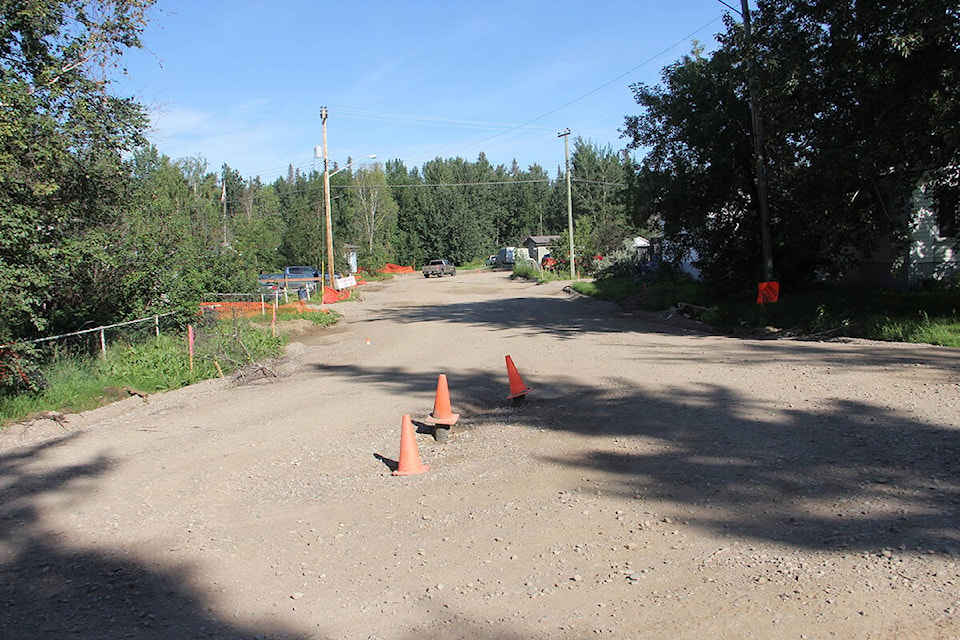Town of Hay River council got its first glimpse of the municipality’s draft plans for capital spending this week but officials cautioned that underfunding from the territorial government still has to be addressed.
“We took the approach of trying to identify what is a need, but really it points to a picture of saying … that we are continuing to be underfunded by (the GNWT Department of Municipal and Community Affairs) MACA,” said senior administrative officer Glenn Smith. “There is a higher reliance on finding those contribution dollars, those third party dollars. Without them we simply cannot proceed with many projects.”
Sam Mugford, director of finance laid out the town’s 10-year capital plan which identifies major projects over that period, when they will take place, and how much they are expected to cost.
It also shows where funding sources are expected come from.
Mugford said that most of the money for major projects comes from outside of what the municipality can generate.
For next year, for example, the finance department projects more than $16 million in capital expenses, with some of the larger ticket items including the finishing of the new lift station currently under construction, shoreline mitigation on Alaska Road with the repair and extension of the berm at the entrance of the West Channel and continued upgrades on Beaver Crescent, Riverview Drive and Capital Drive.
The municipality expects to spend from its own sources $5.2 million on capital next year with “external source” funding - such as from the federal and territorial governments- representing the remaining $10.8 million.
“I would say the vast majority - 75 to 80 percent of the capital spending that we do on an annual basis - is third-party dollars that generally administration goes out and applies on,” he said.
“In order to be able to apply for those programs we have to have our own share of our own reserves, to be able to show that we can actually fulfill the commitments that we make under those applications.”
Mugford pointed out that the plan is a rough forecast as the document is updated annually and council has the option of making adjustments during the budget process through operations and maintenance expenses.
The town has some major capital expenses in the intermediate term with a new town hall to be done between 2023 and 2024, a new water treatment plant to be built between 2024 and 2026, and a remediation of the old solid waste facility between 2027 and 2028.
Specific costs of these items were not provided, Mugford said, because there is price volatility on all of the items and the town wants to protect its interests before going out to request for proposals on the items.
“That water treatment plant is a significant spend and we’re in the process of looking into different ways to go about funding,” Mugford said. “But we have identified it as a need within the next decade that needs to be addressed.”
Shortage of GNWT funding
Much of Monday’s discussion drew out the municipality’s ongoing concerns about being underfunded by the GNWT.
Town officials estimates that Hay River is underfunded between$3 million to $4 million every year.
“In consideration of our current water/sewer, operational and asset replacement budgets and plans, we estimate the current GNWT underfunding to be north of $3.5 million per year,” Smith said.
He added that this does not include funding for land development which usually is balanced through land sales.
“But there seems to be an imbalance between current construction costs and market pricing for housing,” he added.
“This is something the town is suggesting needs to also be considered by the GNWT as affordable housing becomes a growing problem.”
Coun. Robert Bouchard said Monday’s capital plan should be used to show MACA that the municipality simply needs more money every year as in some cases, the town is forced to debt finance some projects.
“If we had that extra three or $4 million a year, we can be doing way more quicker (while) keeping up (with) inflation and keeping up to all the higher costs that are coming in the future,” he said.
Mayor Kandis Jameson said she has had recent meetings with the NWT Association of Communities, Premier Caroline Cochrane and her cabinet - during which she has raised pointed concern about underfunding.
“The number one conversation is the funding gap and trying to get stuff done,” she said.
Jameson said she pushed back on some suggestions from at least one minister who believes that the town can generate more revenue through taxes or more land development.
“One of the comments that was made by one of our ministers was ‘well, you have the ability to tax or develop land and you’ve got more taxes coming in,” she said.
“But how do you develop land when you have a water treatment plant that needs to be replaced and a dump? I mean if you’re (the GNWT) expecting us to do all of it, it’s not going to happen and if we fail, they fail.”
